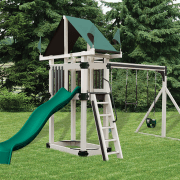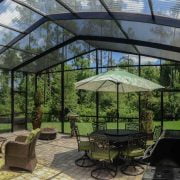As toddlers begin to explore their world with an insatiable curiosity and boundless energy, it’s crucial for parents and guardians to create a safe environment that both encourages exploration and minimises the risks of injury. This comprehensive guide will offer insights and practical advice on childproofing your home and ensuring safety for your toddler, both indoors and outdoors.
Understanding the Risks
Toddlers, typically aged between 1 and 3 years, are at a stage where they learn primarily through touch and movement. This exploratory phase, however, exposes them to potential hazards in their immediate environment. Common risks include falls, choking, poisoning, burns, and drowning.
Childproofing the Home
Securing Furniture and Appliances: Secure heavy furniture and appliances to the wall to prevent tipping. Use furniture straps and anti-tip brackets for items like bookcases, televisions, and refrigerators.
Guarding Against Falls: Install safety gates at the top and bottom of stairs. Ensure windows are locked or have window guards, especially on upper floors.
Electrical Safety: Cover unused electrical outlets with safety plugs. Keep electrical cords out of reach and avoid using extension cords as much as possible.
Kitchen Safety: Use stove guards and knob covers to prevent burns. Keep knives, cleaning supplies, and other hazardous items in locked cabinets or out of reach.
Bathroom Safety: Never leave a child unattended in the bath. Use non-slip mats in the bathtub and on the floor. Adjust your water heater to ensure the water temperature doesn’t exceed 49 degrees Celsius to prevent scalds.
Choking Hazards: Keep small objects, including toys with small parts, out of reach. Be vigilant about objects that can easily be swallowed or inserted into the nose or ears.
Poison Prevention
Many common household items can be toxic to a child. Store medicines, cleaning products, and potentially toxic plants out of reach or in locked cabinets. Be mindful of personal care products like creams and shampoos, which should also be stored safely.
Fire Safety
Install smoke alarms on every level of your home and test them regularly. Have a fire escape plan and practise it with your family. Keep matches, lighters, and candles out of reach.
Outdoor Safety
Garden Safety: Ensure the garden is enclosed with secure fencing. Remove toxic plants and garden chemicals. Fill in any ponds or water features, or ensure they are securely covered.
Play Equipment: Check outdoor play equipment for safety. Ensure swings, slides, and other equipment are stable and in good repair.
Supervision and Education
While childproofing is essential, it is no substitute for supervision. Constant vigilance is key, especially in potentially dangerous environments like kitchens and bathrooms. This is why you find lots of safety precautions and staff watching when your child visits nursery school or early years education centres.
Teaching your child about dangers and setting boundaries is also important as they grow. Eventually they will learn to avoid the things that have been identified as potentially dangerous.
Emergency Preparedness
Keep emergency numbers, including poison control, near your phone or on the refrigerator. Learn basic first aid and CPR. Ensure your home address is clearly marked in case emergency services need to find your home quickly.
Conclusion
Childproofing your home is a continuous process that evolves with your child’s development. Regularly reassess your home for potential hazards as your child grows and their abilities change. Remember, the goal of childproofing is not just to protect, but also to provide a safe space where your toddler can explore, learn, and grow.














Comments